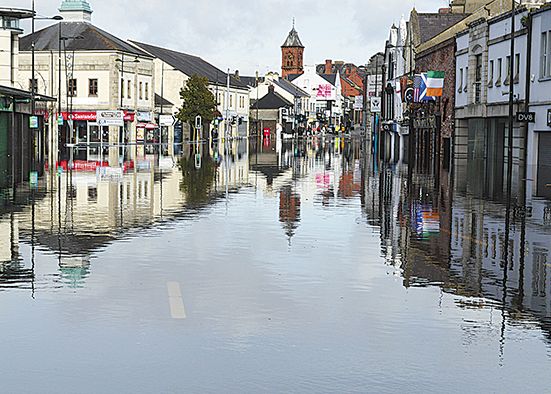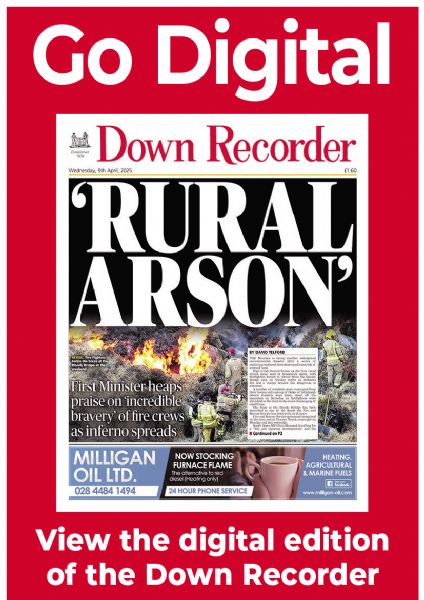£22.5m ‘no brainer’
£22.5m ‘no brainer’
11 June 2025

A FLOOD prevention scheme for Downpatrick will cost £22.5m if implemented in full, a comprehensive new feasibility study has revealed.
The preferred option featuring a combination of culverts, embankments, drains and pumps and 100 metres of flood wall, will have the capacity to protect 106 businesses and homes and cost £2m to maintain.
The 338-page report was made public last week and estimates that implementing the “complex scheme” will save £26m on dealing with the aftermath of individual future flooding incidents in the town’s commercial heart.
But no final decision has yet been taken on the way forward.
While the study outlines a series of flood mitigation measures and what have been described as “feasible solutions”, they are now to be scrutinised in granular detail to examine their economic viability.
Senior Department for Infrastructure officials have been tasked with adding up all the benefits that can be gained over the lifespan of the flood alleviation project and compare that against the cost.
They are expected to complete the work within six months when a decision will be taken to press ahead with the scheme or not and how it will be financed if it gets the final green light.
Downpatrick regeneration officials say the economic case looking at the cost benefit analysis of the proposed scheme is a “no brainer” as it will save tens of millions of pounds preventing future floods.
Details of the proposed alleviation scheme come almost 19 months after Downpatrick town centre was under five feet of water after the Quoile river burst its banks.
Businesses were swamped after the wettest October on record in 2023 and a high spring tide, with the devastation unfolding in front of business owners who could only watch in horror and bewilderment as flood water rose menacingly destroying their livelihoods.
The feasibility report on a flood alleviation scheme compiled by a team of expert engineers examined 14 different options as part of a computerised simulation exercise of possible flooding scenarios, with all eyes now on the outcome of the scheme’s economic assessment.
The study cautions that what is proposed is a “complex scheme” and that given the risks and unknowns at this stage, it may become economically unviable as work on the design proceeds.
In addition, it says further investigations are recommended prior to detailed design to mitigate some of these key risks and confirm economic viability through a business case.”
Stormont Infrastructure Minister Liz Kimmins was in Downpatrick last week and confirmed further work would be undertaken to determine whether the scheme would be economically viable.
She said her department “wants to get it right” when it comes to measures to protect Downpatrick town centre.
Ms Kimmins said she was familiar with the impact of the catastrophic flood in 2033 and the incident something her department is keen to address and wants to be as “proactive as possible”.
She said her officials are “moving as far into the future as possible” and working backwards so the various options presented in the feasibility study are looking at a 100-year flood protection.
“We are trying to put in the most sustainable, long term protection for Downpatrick; trying to build something that is future proof as well. The cost of doing nothing is so much greater and we have to ensure what we do has the maximum effect,” she continued.
“We have to reduce the impact of flooding and protect homes and businesses and this is one element of this.”
Ms Kimmins continued: “Flooding in Downpatrick and how to reduce that flood risk is an extremely complex issue with many variables. That is why it was important that a comprehensive study was carried out to inform the most viable and effective way ahead.”
Ms Kimmins said that in terms of funding, there was a need to get an idea of “what we are looking at and what the option going forward might be and then the cost of that process”, explaining her department is not quite at that point yet, but is in a good position to know potentially what is ahead.
She added: “This needs to happen but we want to make sure we get it right.”
The flood study is available at www.infrastructure-ni.gov.uk/publications/downpatrick-feasibility-report-may-2025


